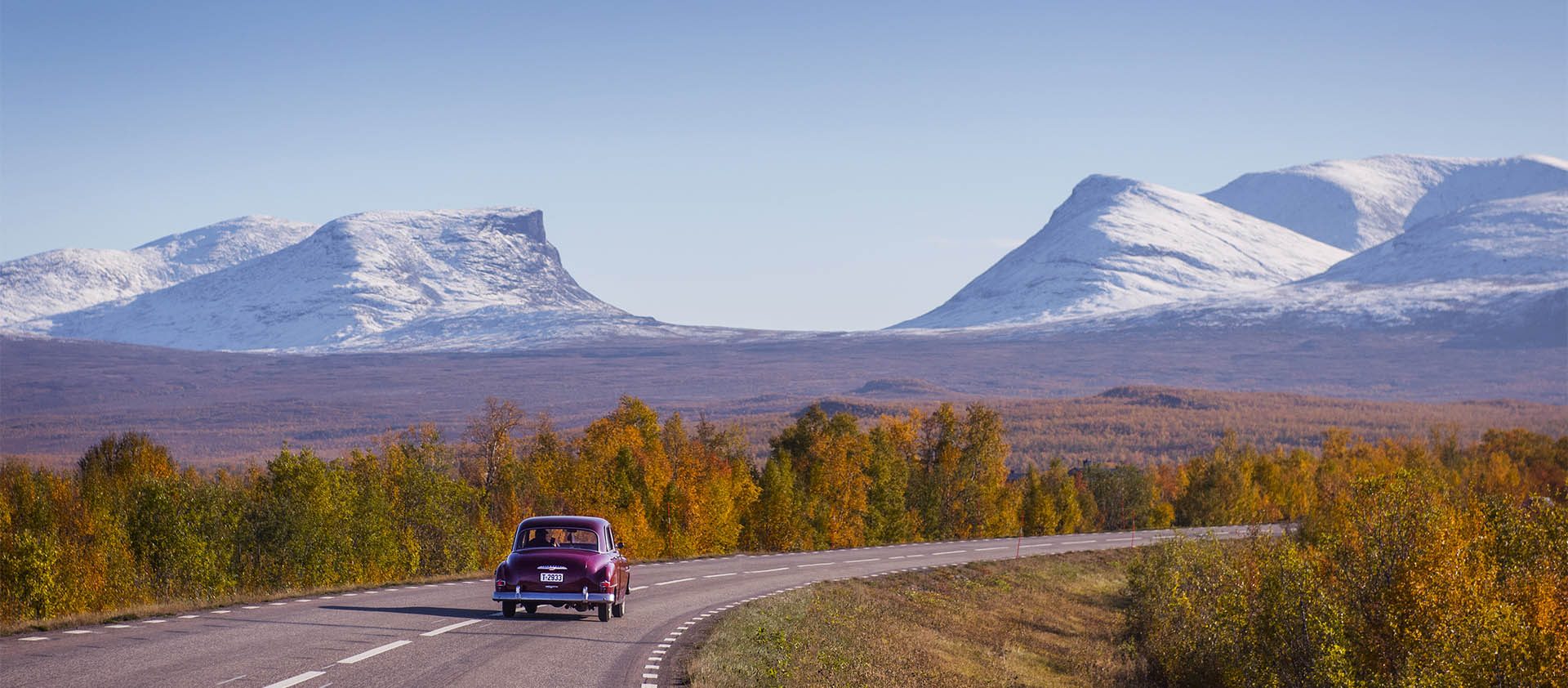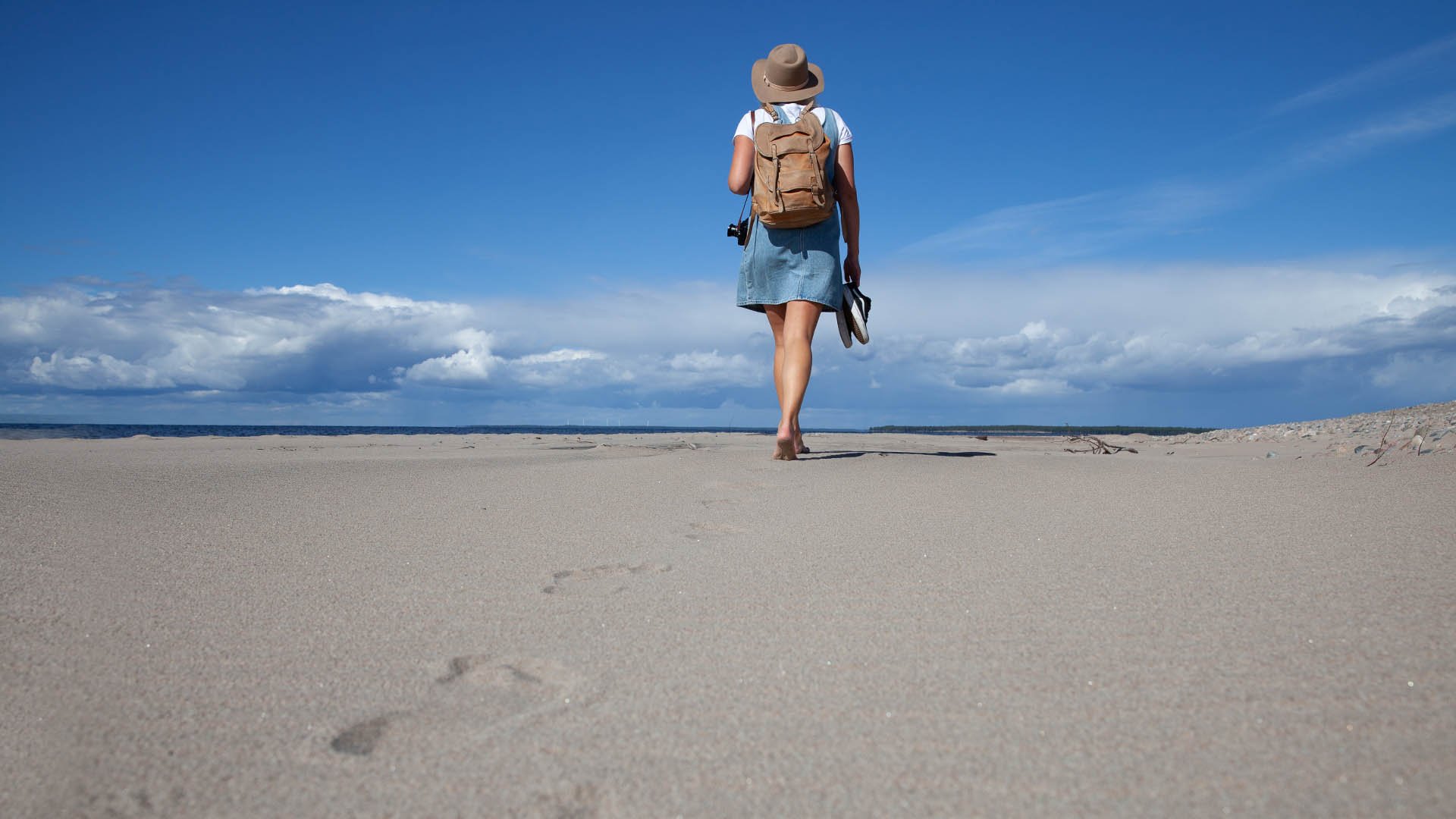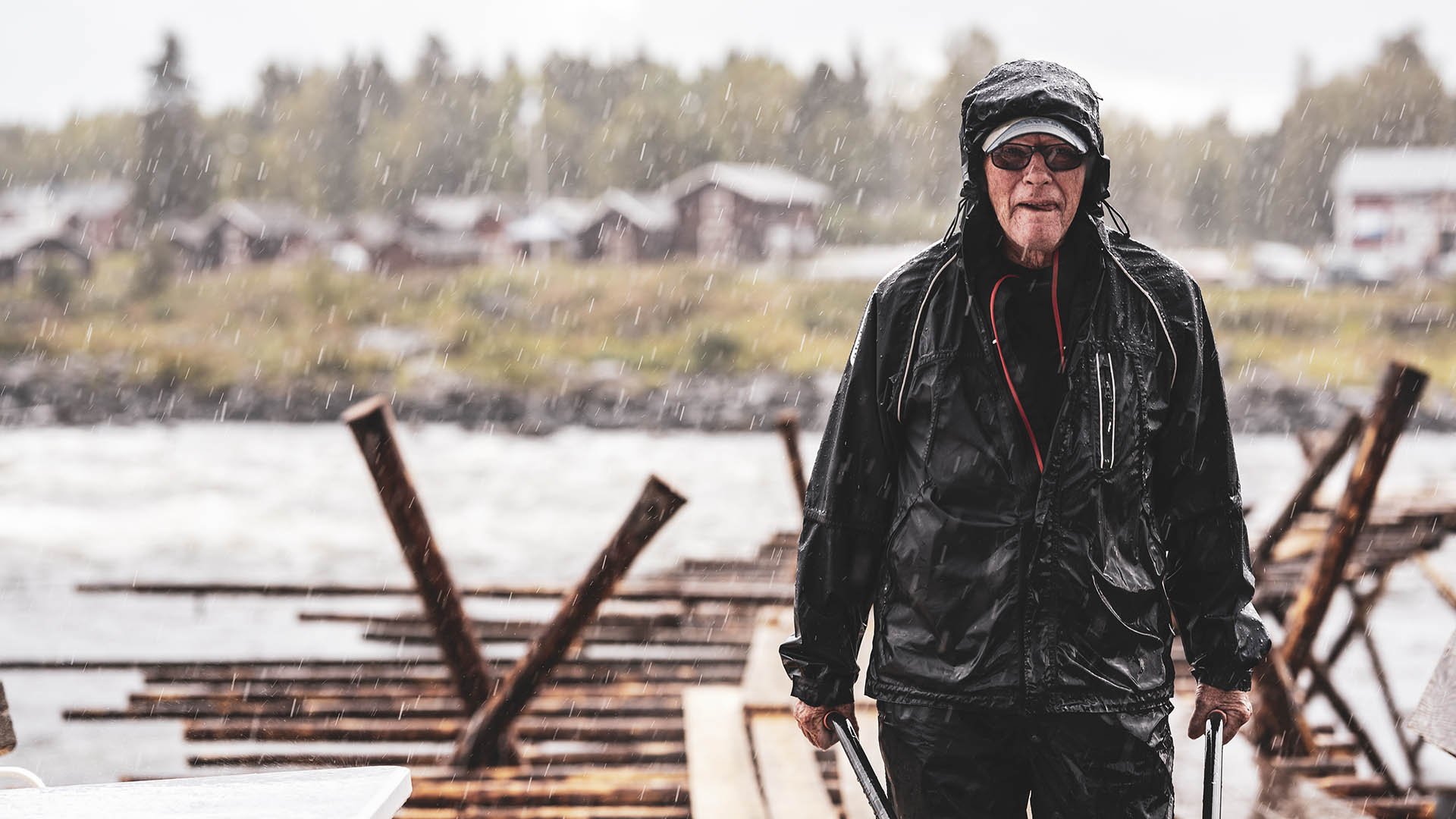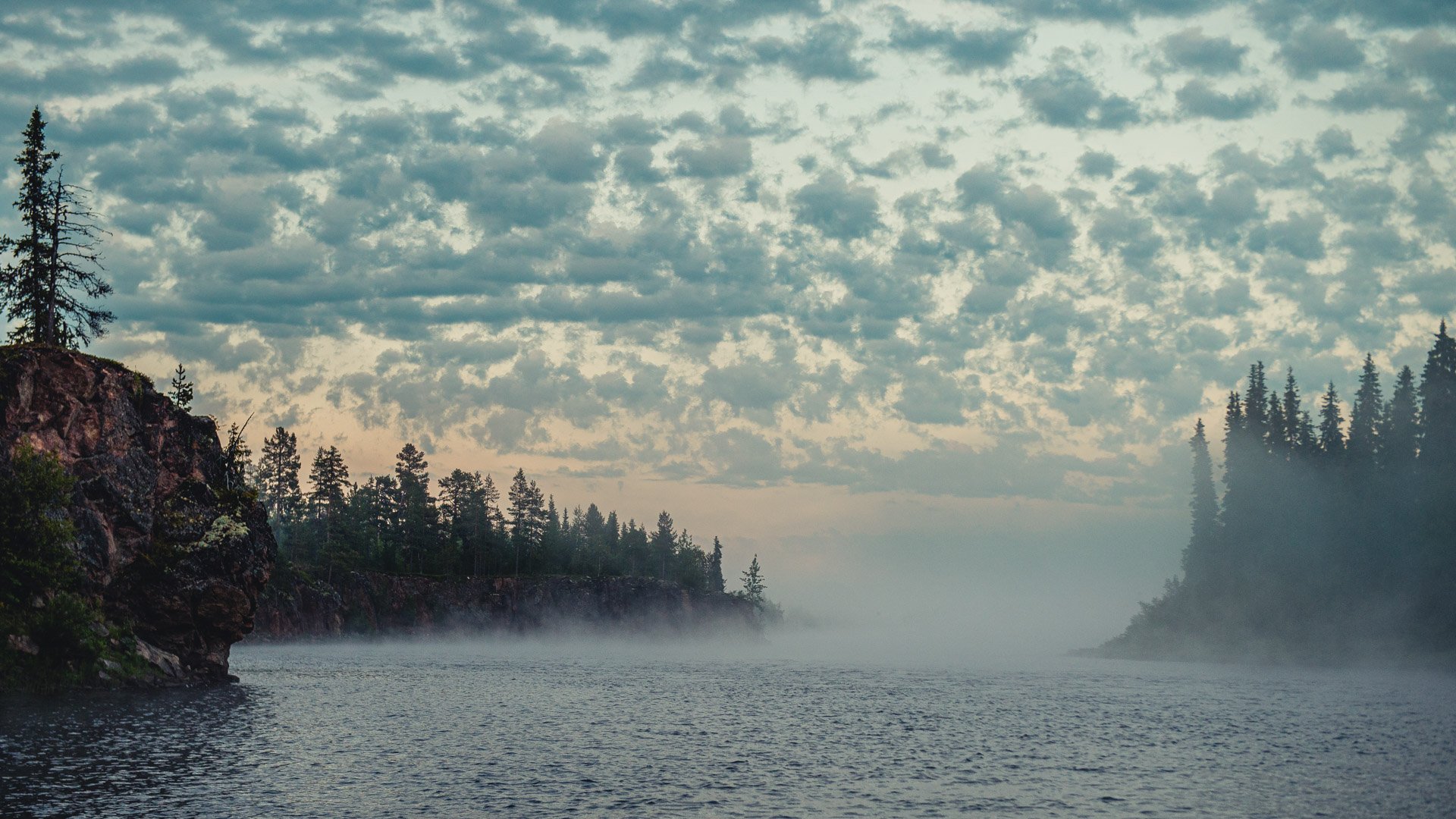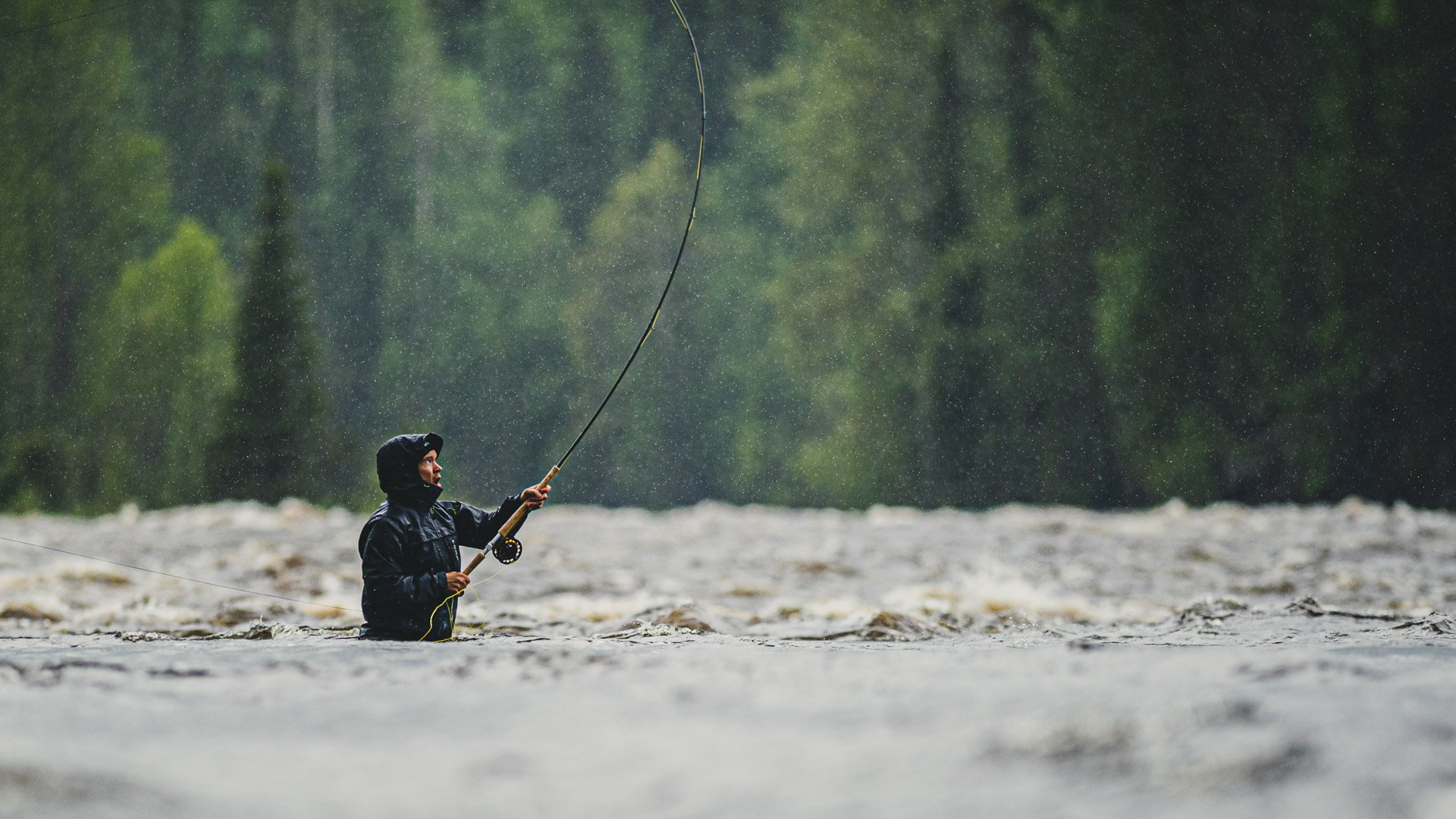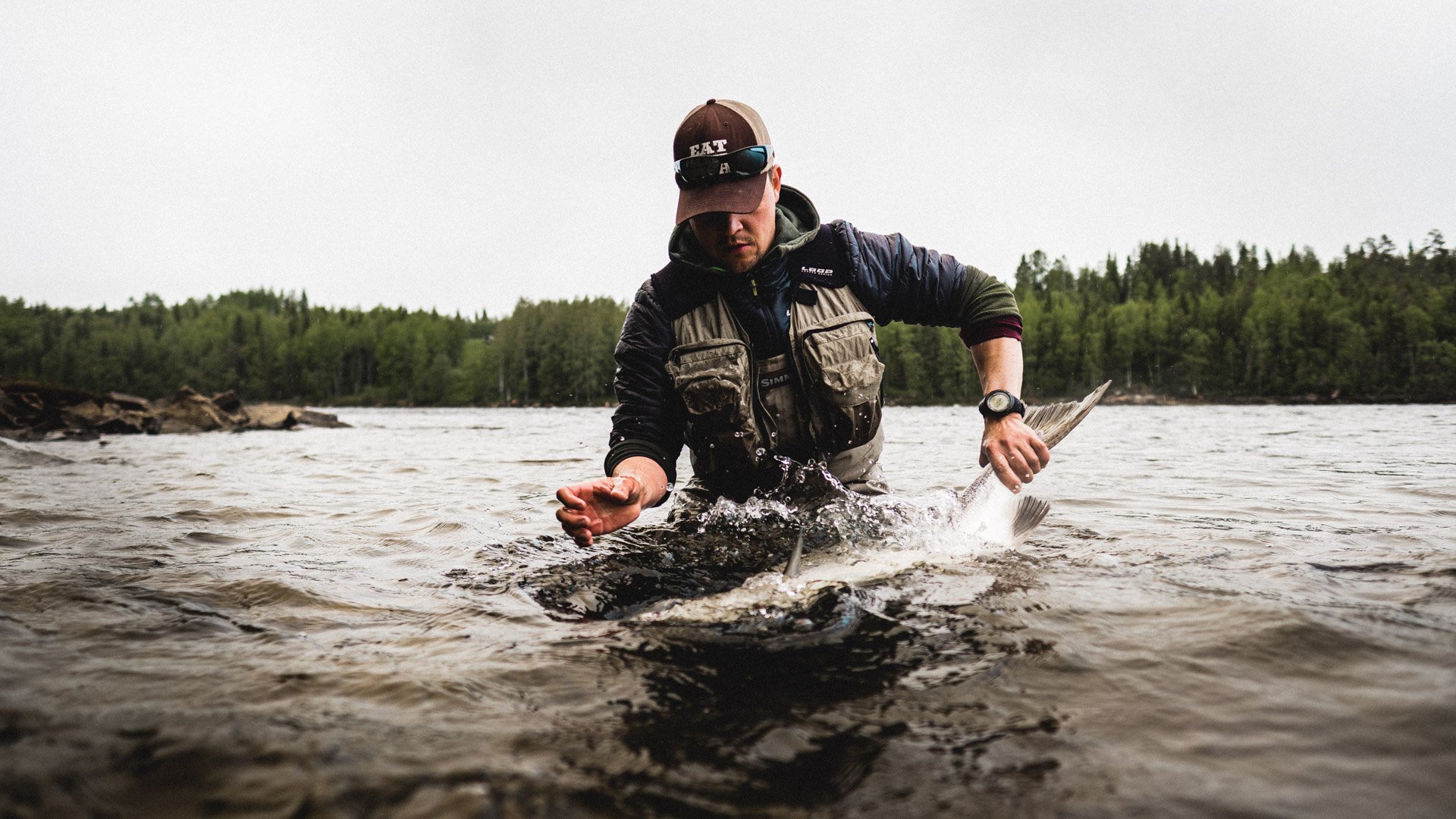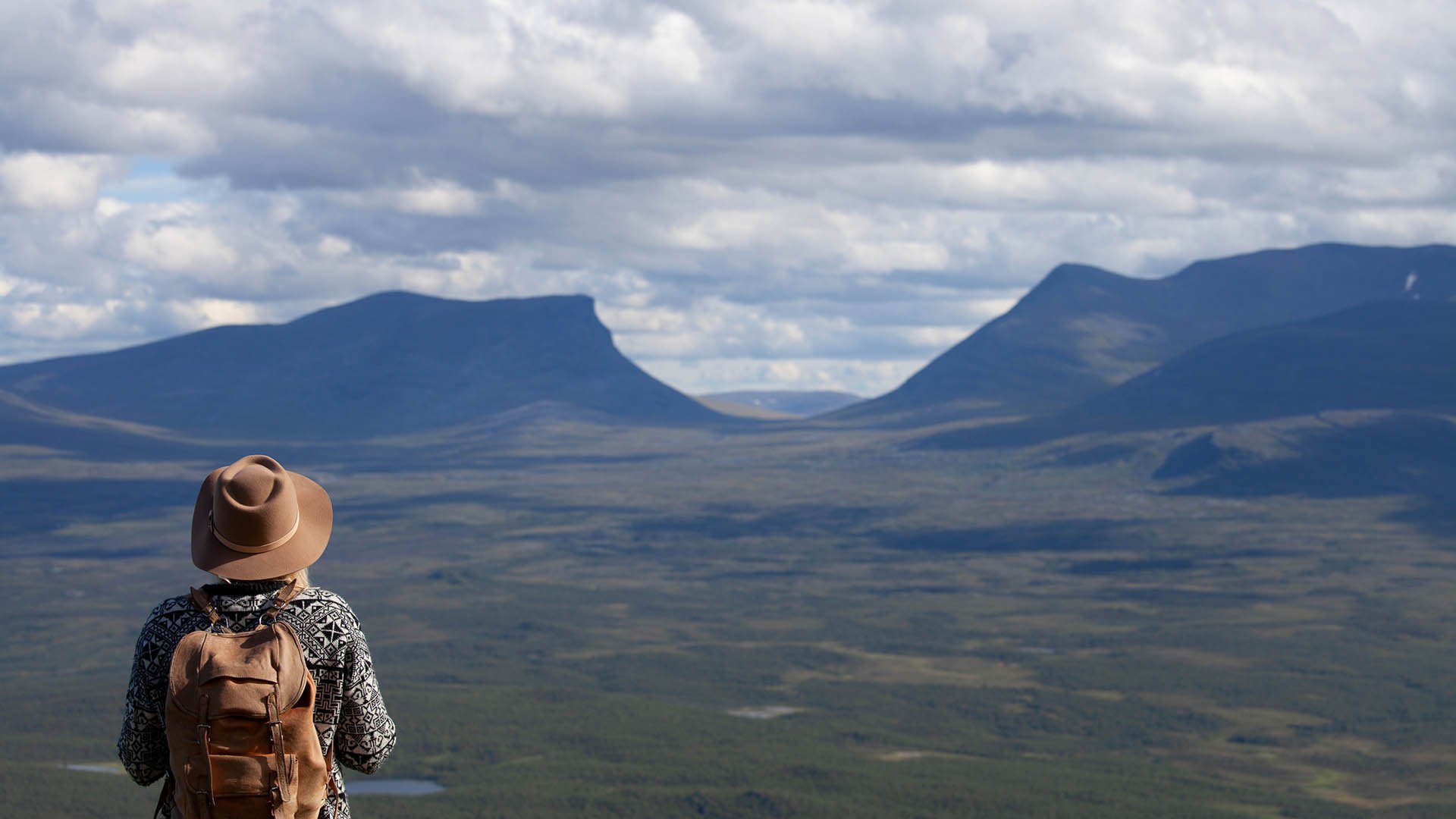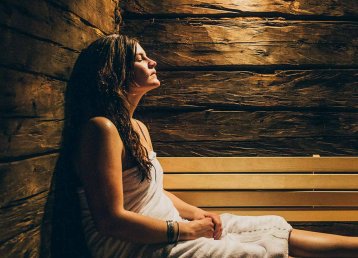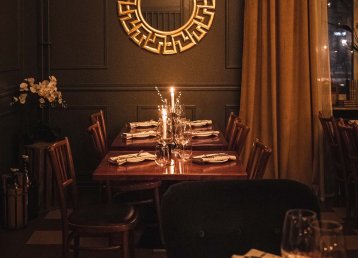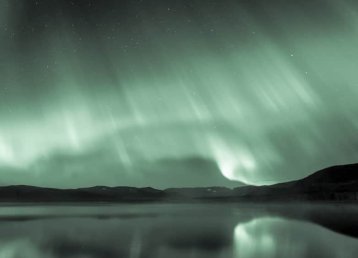The entire route, from Haparanda in the east to Riksgränsen in the west, is 480 kilometres. The journey takes you from the estuary of the Torne River in the Haparanda archipelago to the river’s source, above lake Torneträsk. The idea is for you to travel at your own pace and on your own terms, but this gives you a starting point.
Haparanda—Riksgränsen
From the mouth of the Torne River in the Haparanda archipelago all the way up to the river’s source above lake Torneträsk.
Klick on [] to open the map on your mobil device or desktop (top right corner on the map).
1. Haparanda–Övertorneå: 70 km
Once upon a time, Haparanda was where East met West. A nest of spies, robbers, and goulash barons. It’s been said that a fifth of the city’s inhabitants were spies and agents. Haparanda is the easternmost town in Sweden, and these days around 6,500 people live here. Everyday life is closely intertwined with Finnish Tornio, on the other side of the border. You basically only notice you’ve crossed the border if you check the time, because it moves forwards or backwards an hour depending on where you’re headed. One of the world’s largest saunas is found in Haparanda as well, a sauna located in the award-winning spa at Hotel Cape East, 10 benches high that can accommodate up to 150 people.
Also read
The Whitefish in KukkolaAround 10 kilometres upstream of Haparanda, along route 99, you’ll find Kukkolaforsen Turist och Konferens. The first big rapids along the river are here: Kukkolaforsen, known for traditional fishing. Mainly whitefish, but also salmon, are caught using long-handled dip nets from purpose-built piers. The fish is processed a stone’s throw from the river, then served in the hotel restaurant. Food doesn’t get much fresher than this. At Kukkolaforsen is also where the Sauna Academy has its seat, and the facility consists of 15 types of saunas from different eras.
Haparanda Stadshotell
The walls of this hotel, Haparanda Stadshotell, could tell you a lot of exciting stories. It also happens to be a fantastic place to stay, and to eat.
2. Övertorneå–Pajala: 110 km
Travelling through Tornedalen is like balm for the soul. The landscape is fertile and undulating, and in summer the sun never really sets. The world’s northernmost mustard grows in Pesula, in Övre Kukkola. Arthotel Tornedalen is located in Risudden, or Vitsaniemi, where curator Gunhild Stensmyr has created an amazing living experience: you stay in traditional houses and at all times surrounded by carefully selected art – where everything has its place, and everything has its story.
Also read
Arthotel TornedalenFurther upstream, in Övertorneå and on top of Luppioberget is Lapland View Lodge. It’s called that for a reason, and it’s all about the view, of course. The lodge has a bar and a restaurant, as well as 40 cabins with large glass sections taking in that view. From here you can see fishermen on boats valiantly rowing for salmon on the border river, and into Finland with its vast forests and marshlands in a mighty panorama.
Arthotel Tornedalen
In Risudden Gundhild Stensmyr has created a unique hotel experience, a combination of genuine countryside and an art collection. She once moved away from the area, but now she’s back, to pursue a future dream.
3. Pajala–Jukkasjärvi: 180 km
In the village Jouksengi you cross the Arctic Circle and in Pajala, just downstream of Kengis Bruk – the old ironworks that employed 170 workers in the 18th century and was the northernmost ironwork in the world – the Torne River divides. One part becomes the Muonio River, continuing north along the Finnish border at the Three-Country Cairn at Kilpisjärvi. The other continues as the Torne River, direction Pajala and then the Swedish mountain world. A nice place to stop is the Palokorva blast furnace ruins, a gem along the road.
Another lovely place to visit is the old grazing marsh Vasikavouma, now Vasikavouma Nature Reserve. People used to come here to harvest food for the animals on the farm. Vasikavouma is just over two square kilometres large and believed to be one of the biggest in Europe. Another green stop on the road is just before the village Masugnsbyn, where there is a deep, lush canyon to visit in Masugnsbyn Nature Reserve.
Salmon fishing
When Lars Munk moved to Pajala he decided to invest wholeheartedly in salmon fishing. Little did he know back then that the Torne River was becoming one of the best salmon rivers in the world.
Jukkasjärvi
10 kilometres before arriving in Kiruna there’s a sign pointing you to Jukkasjärvi and Icehotel. For more than 30 years Icehotel has been built up and then melted down, all in a perfect cycle where the Torne River and its water provides the means to make it possible. Since 2016 you can also experience Icehotel in summer, thanks to Icehotel 365. It measures 2,100 square metres and features 18 art and deluxe suites, an ice bar, and the Experience Room for film screening, among other things. Icehotel 365 is cooled by solar panels, charged by the rays of the midnight sun.
Also read
The story of a frozen iconIcehotel 365
For more than 30 years Icehotel in Jukkasjärvi has existed in harmony with nature, rising up and melting down in perfect harmony with the Torne River. Since 2016 there is also Icehotel 365, open every day of the year, powered by the midnight sun.
4. Jukkasjärvi–Kiruna: 19 km
Kiruna is a transforming city. The entire city is actually on the move. It’s an enormous project to enable continued development and mining. The move means, among other things, that Kiruna now has a new hotel. The classic Scandic Ferrum will disappear, and the new Scandic Hotel Kiruna, with an architecture that brings Kebnekaise and iconic Tjounavagge to mind, is erected in a new spot, in the centre. In the 1970s Kiruna was the largest city in the world, by area, but above all Kiruna has been an Arctic benchmark city that dared to break new ground: the first in the world to get electrified street lighting and architect-designed houses to provide quality of life. Around 22,000 people live in the municipal area. That means each Kiruna resident has an average of one square kilometre to themselves. Camp Ripan in Kiruna is a family business with a clear sustainability profile and local roots – down to the smallest details. The hotel has an award-winning spa with products made in the local area.
5. Kiruna—Abisko: 94 km
In Abisko you can visit Abiskojokka. This stream runs through the popular Abisko National Park. If Haparanda Archipelago at the beginning of this journey is one of our youngest national parks, Abisko is one of our oldest ones, and actually one of Europe’s oldest, founded back in 1909. This is where Sweden’s longest hiking trail begins, or perhaps ends: Kungsleden – the King’s Trail. Abisko Mountain Lodge is a popular accommodation option with a celebrated menu. You can also see Aurora Skystation from the road. It’s located on top of the mountain Noulja and in winter this place has a reputation as the best place in the world to see the northern lights. You can take the chair lift to the top of the mountain in summer too, and enjoy a light hike with stunning views, not least overlooking the iconic Tjounavagge.
Also read
The King's trailAlpine activities
Abisko is the perfect spot if you want to take a breath of fresh air and treat yourself to fun activities. Abisko Outback is one of the companies here that will help you find these experiences.

Riksgränsen
Riksgränsen is perhaps most known as a place where the skiing season lasts until midsummer, but it also offers hiking and running in fantastic mountain terrain.
6. Abisko—Riksgränsen: 38 km
In Björkliden you can visit Silverfallet, a waterfall by lake Torneträsk that makes the perfect setting for a picnic. Here you’ll also find Björkliden mountain village with accommodation options and a restaurant that boasts a magnificent view of the mountain world. Between Vassijaure and Kåpparåsen you’ll find the hiking trail to lake Trollsjön (Rissajaure) through the magical stone valley Kärkevagge. It’s an excellent day hike to Sweden’s clearest mountain lake.
Also read
Kärkevagge — The stone vallyRiksgränsen is perhaps best known as Sweden’s northernmost ski resort, where the skiing season can last all the way to midsummer. But in summer Riksgränsen and the surrounding area offers great hiking. When the navvies started building the railway between Kiruna and Narvik, the trail between Abisko and the Rombaken Fiord in Norway was used to transport material for the railway. If you hike, or ride a mountain bike, along this so-called Navvy Road from Abisko to Riksgränsen you can discover listed monuments from the railway construction era and remnants from the second world war, but above all enjoy the amazing scenery. Once you arrive in Riksgränsen you’ll be greeted by wild and rugged nature as well as Hotell Riksgränsen and multiple-award-winning Niekhu Mountain Villa.
Niekhu Mountain Villa
Nikehu Mountain Villa is based on two things. The love of the place, Riksgränsen, and a willingness to deliver high-quality experiences in a spectacular environment.
